Hitachi-UTokyo Laboratory: Seventh Industry-Academia Collaboration ForumToward Realizing Energy Systems to Support Society 5.0Promoting an Integrated Transition that Comprehensively Encompasses Society, Regions, and Industry
Highlight
The Hitachi-UTokyo Laboratory has been publishing proposals titled "Toward Realizing Energy Systems to Support Society 5.0" since 2018. These include a wide range of suggestions related to energy transition scenarios based on energy supply and demand simulations generated by backcasting from 2050. Held in January 2025 against a backdrop of ongoing changes in societal conditions, the seventh industry-academia collaboration forum provided a venue for presenting the work being done by the Hitachi-UTokyo Laboratory to advance the societal systems essential for achieving carbon neutrality and for invited experts from industry, academia, and government to discuss the integrated transition being advocated by the laboratory.
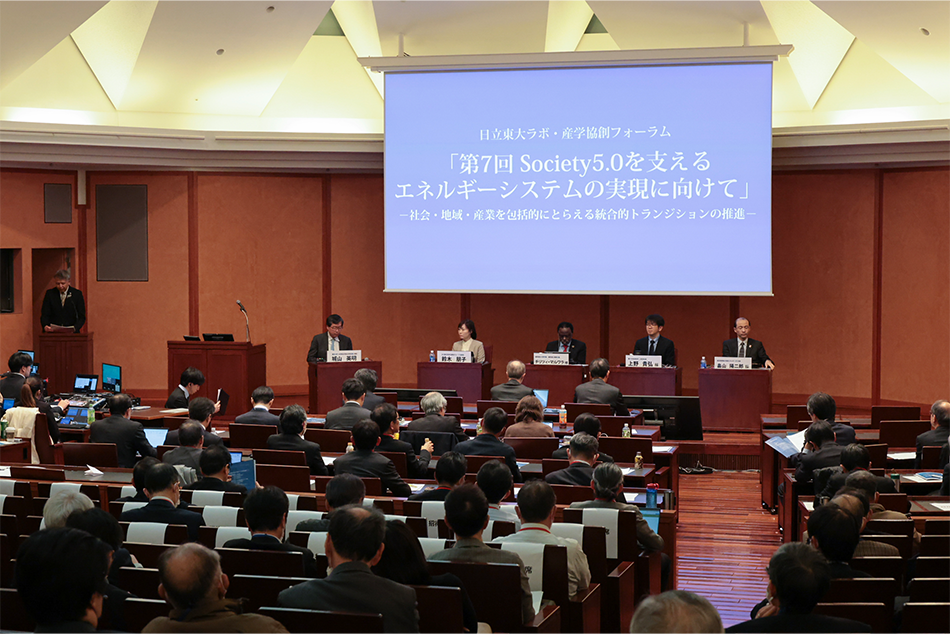
Opening Remarks
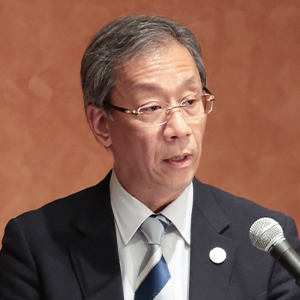 Teruo Fujii
Teruo Fujii
President, The University of Tokyo
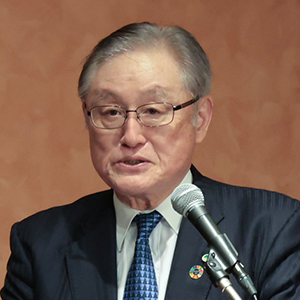 Toshiaki Higashihara
Toshiaki Higashihara
Director, Executive Chairman, Hitachi, Ltd.
The Hitachi-UTokyo Laboratory’s Seventh Industry-Academia Collaboration Forum was held at the Hongo Campus of The University of Tokyo in January 2025. The Hitachi-UTokyo Laboratory seeks to resolve global-scale challenges from an overarching perspective that shares and combines diverse opinions through collaborative creation between industry and academia. In the nine years since it was established in 2016, the laboratory has been engaging with stakeholders from the public sector and industry in a dialogue on how Japan should address the issue of energy.
Teruo Fujii, President of The University of Tokyo, spoke the following words as he opened the forum, asserting the necessity of general intelligence that transcends the walls between academic fields and connects specialized expertise interdisciplinarily for resolving complex challenges that humanity confronts. He referred to how the energy that sustains human society must necessarily be considered in the context of what is happening in that society. And also referred to the more volatile global situation and the rising severity of natural disasters due to climate change. “Acknowledging the increasingly uncertain global situation and the rising demand for electric power driven by progress in digital transformation (DX) and green transformation (GX), the draft of the Seventh Strategic Energy Plan published at the end of 2024 reiterated the need for reliable energy supplies. The global-scale challenges that confront society cannot be addressed through any single academic field, having complex interrelated problems both in terms of their causes and how to resolve them. I hope that the discussions at this forum can offer clues about how to overcome the challenges that face humanity.”
Toshiaki Higashihara, Director and Executive Chairman of Hitachi, Ltd., likewise identified three key points, which he spoke about with reference to the draft of the Seventh Strategic Energy Plan. These are that our thinking on carbon neutrality and the various other challenges we face should consider these issues in broad terms, the rebuilding of Japan’s manufacturing capabilities, and the fostering of people with a sense of initiative who feel a personal engagement with the challenges that face society. “Resolving societal challenges calls for an empathetic approach in which we devise solutions in consultation with people from throughout the world. In addition to the questions of what to do about energy and what we mean by people’s wellbeing, I hope this forum can provide an opportunity for us think collectively about the issue of how to foster people capable of overcoming these challenges.”
Review of Hitachi-UTokyo Laboratory Activities and Seventh Edition of Proposal
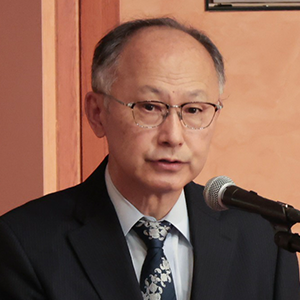 Shinobu Yoshimura
Shinobu Yoshimura
Project Professor, Graduate School of Frontier Sciences, The University of Tokyo
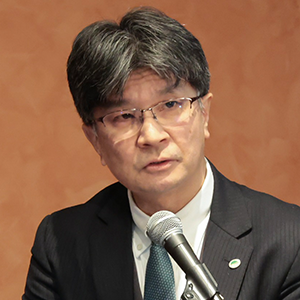 Naohiro Kusumi
Naohiro Kusumi
General Manager, Center for Sustainability, Research & Development Group, Hitachi, Ltd.
Next were presentations on the activities of the Hitachi-UTokyo Laboratory that also touched on developments in the energy sector and in the domestic and international situations.
Naohiro Kusumi, General Manager at the Center for Sustainability, Research & Development Group, Hitachi, Ltd., spoke about how the circumstances surrounding the climate, energy, and environment are entering a new phase, with incumbent administrations being voted out in a number of national elections at a time when the volatile international situation is impacting people’s lives. Noting also that climate change is clearly worsening, with 2024 being the first year in which temperatures were more than 1.5°C above levels prior to the Industrial Revolution, he spoke about the need to plan for future electricity supply in expectation of rising energy demand driven by rapid growth in the information and telecommunications industries and that thought needed to be given to sustainable development.
Hitachi-UTokyo Laboratory has been studying energy supply and demand scenarios for achieving carbon neutrality in 2050. Reports have highlighted the need to undertake a wide variety of actions to address the obstacles to the wider adoption of renewable energy, which include output curtailment and the shrinking workforce in the electricity sector. It has also advocated an integrated transition that will enable a comprehensive and organic shift to sustainability through a dialogue in which the individual measures involved in the energy transition are debated in tandem with other policy priorities including restoration of biodiversity, promotion of regional prosperity, realization of a circular economy, disaster preparedness, and gender equality.
Next, Shinobu Yoshimura, Project Professor at the Graduate School of Frontier Sciences, The University of Tokyo, gave an overview of the research being done at Hitachi-UTokyo Laboratory and its activities in the 2024 academic year. Making reference to the clean tech agreement reached between Imperial College London, Hitachi, and The University of Tokyo in FY2023, he also spoke about initiatives for discussion and sharing based on scientific evidence that also involve young students and researchers. Since FY2017, Hitachi-UTokyo Laboratory has been publishing annual proposals entitled, “Toward Realizing Energy Systems to Support Society 5.0.” A number of the measures that have been discussed through the activities of Hitachi-UTokyo Laboratory have already reached the stage of practical application and the laboratory intends to continue engaging in debate that considers the increasingly confused situation in society and internationally.
Panel Discussion: Growth Strategy and Measures for Achieving an Integrated Transition
In the panel discussion that followed, each of the invited panel experts gave a brief presentation which then served as a basis for the subsequent debate. A summary of these presentations and details of the debate are provided below.
Session 1
New Phase of Green Transformation in Japan
Entitled “New Phase of Green Transformation in Japan,” the session 1 panel discussion involved three panelists and was moderated by Professor Hideaki Shiroyama of the Graduate Schools for Law and Politics at The University of Tokyo and Tomoko Suzuki, Corporate Chief Engineer at the Research & Development Group, Hitachi, Ltd. Following an introduction that reviewed the circumstances in which Japan currently finds itself, including political developments in Europe and America, the rising influence of the Global South, and the state of climate change, a discussion was held on what the ongoing global changes have to tell us regarding Japan’s transition, and what forms of governance and innovation will be called for over the next five years of Japan’s green transformation (GX).
The presentations from each panelist and a summary of the consequent discussion are given below.
[Moderators]
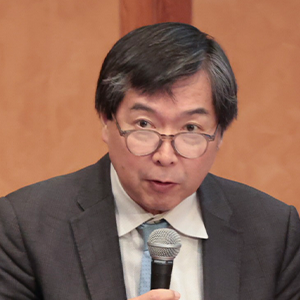 Professor Hideaki Shiroyama
Professor Hideaki Shiroyama
Graduate Schools for Law and Politics, The University of Tokyo
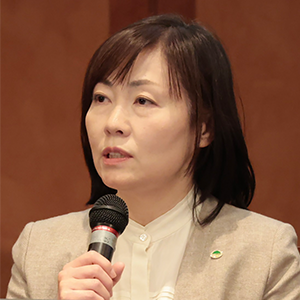 Tomoko Suzuki
Tomoko Suzuki
Corporate Chief Engineer, Research & Development Group, Hitachi, Ltd.
Crisis in Sustainable Development and Role of Governance and Digital Technologies
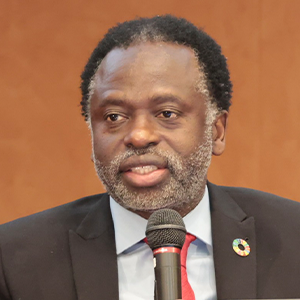 Tshilidzi Marwala
Tshilidzi Marwala
Rector, United Nations University and UN Under-Secretary-General
Challenges that could never have been anticipated are emerging around the world at a time when only five years remain before the 2030 target date for achieving the Sustainable Development Goals (SDGs). While this has prompted growing calls for using digital technologies to deliver innovation and achieve the SDGs, hopes that the tools and techniques of data-driven decision making will help to boost efficiency must be set against the very large energy requirements that come with them. If the SDGs are to be achieved, we need to re-evaluate both governance and mechanisms while also stepping up our adoption of digital solutions.
At its Summit of the Future held in September 2024, the United Nations adopted the Global Digital Compact, the first ever comprehensive global framework for digital collaboration and artificial intelligence (AI) governance. There is a need to change people’s behavior based on the values that underpin governance, namely transparency, fairness, inclusivity, and accuracy. Inclusive governance that can respond with flexibility to the many changes taking place in the world will be essential if we are to overcome the multiple interconnected crises that confront us and achieve the SDGs.
Impact of Green Competition Brought about by New Political Realities, and What it Means for Japan
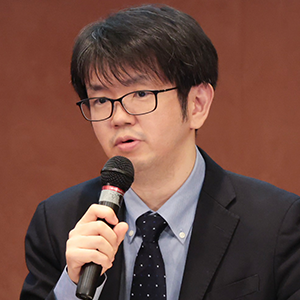 Takahiro Ueno
Takahiro Ueno
Senior Researcher, Central Research Institute of Electric Power Industry
A free and open international order built on an assumption of peace emerged in the years following the end of the Cold War between the United States and the Soviet Union in 1989, a process that continued up to the adoption of the Paris Agreement in 2015 as an international framework for addressing climate change. Since the decision by the first Trump administration to withdraw the US from the Paris Agreement in 2017, however, the global situation has become more fluid with ongoing uncertainty over international cooperation on climate change.
Meanwhile, it also appears that the reaction against decarbonization is taking the form not only of nations pitted against one another, but also of public opposition in the Western nations that have been the driving force behind action on climate change. One example is the proposition that people’s awareness of the cost of decarbonization measures will become much more tangible when those measures reach a level that directly impacts their daily lives, such as their cars or home heating, and that this will lead to opposition. On the other hand, this opposition could also be a reflection of other divisive factors that already existed in society, such as anti-immigrant and anti-elite sentiments. Differences are likewise evident between different nationalities and age groups. In Japan, for example, it is the younger generations who are less concerned about climate change whereas the opposite is true in the US. I believe that the concept of an integrated transition is important both for gaining the understanding of society as a whole and for achieving a balance of solidarity.
Current and Future GX Policies of Japan’s Government
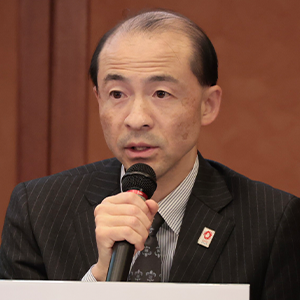 Yojiro Hatakeyama
Yojiro Hatakeyama
Deputy Commissioner, Agency for Natural Resources and Energy, Ministry of Economy, Trade and Industry
GX is about more than just reducing the emission of greenhouse gases, it is also a means of combining this with economic growth. The government of Japan is seeking to invest more than 150 trillion yen of public and private funds into GX over the next decade through a combination of three investment support measures. These are (1) the issuing and spending of Climate Transition Bonds (GX bonds, 20 trillion yen over 10 years), (2) carbon pricing, and (3) the promotion of transition finance and the establishment of a GX Acceleration Agency.
The GX 2040 Vision (draft) for the state of society and the economy around the year 2040 was published by the government at the end of 2024 with the goal of providing greater certainty over long-term investment in GX. This vision anticipated the emergence of an industrial structure around GX that would include the rise of new growth industries in the field together with greater competitiveness in existing manufacturing industries achieved through a combination of both DX and GX.
While decarbonized energy is crucial to economic growth under this scenario, these forms of electricity generation tend to be geographically dispersed. However, given the lack of both the time and the financing for the massive investment needed to build transmission lines and networks to those locations where demand is concentrated, it is hoped that progress can be made on practical policies for encouraging industry clusters. Examples might include enticing corporate investment into locations that are well-resourced with decarbonized electricity generation and the offering of incentives to these companies and to the local government agencies involved in putting this infrastructure in place near those decarbonized electricity generation sites.
Panel Discussion
ShiroyamaYou have spoken about the importance of innovation powered by digital technologies at this time when the target date for achieving the SDGs is only five years away. While this is certainly true in terms of the medium-term challenge, how should we be addressing and overcoming the short-term developments that confront us in this increasingly uncertain world, as exemplified by infectious diseases like COVID-19?
MarwalaFirst of all, we need to be aware of how the many different crises that confront us are all interlinked. As solving one problem may have adverse consequences in other areas, there is a need to strike a balance if we are to address multiple challenges at once. Technology is crucial, such as the use of drones in agriculture or AI for improving teaching and learning. As it unfortunately appears that many of the targets set by the SDGs cannot be achieved in time, I would like to see us start the debate about what needs to be done from 2030 onwards.
ShiroyamaRegarding divisions over climate change, we have heard about survey results highlighting varying levels of concern regarding this issue among the younger generations in Japan and America. What is this telling us, and what influence will it have on future measures for addressing climate change?
UenoIt seems likely that attitudes toward not only climate change, but also other global challenges will change with changing generations. While it may well be too late to do anything once the effects have played out, one possibility is that when global-scale problems come to a crisis, a trigger point will be reached that changes people’s attitudes regardless of international borders.
ShiroyamaI believe that GX policy calls for the integrated adoption of measures covering a range of areas, including those for industry and economic security in addition to the core energy policy. Could you please go into a little more detail on future GX policy?
HatakeyamaIt is said the existing technology is not yet up to the task of achieving carbon neutrality through changes across society, including in people’s private lives and economic activity, while at the same time enacting GX measures that also target economic prosperity. Since it is still unclear when, and at what cost, technologies for reducing greenhouse gas emissions will be able to be put in place, I believe there is a need to proceed boldly while also formulating policies that make provisions for when initiatives prove unsuccessful.
ShiroyamaI see a need to genuinely consider the issues across a range of fields in an interconnected manner. Unfortunately, there are still difficult questions about how to link these issues together and how best to proceed.
MarwalaAs a first step, I believe academic education is particularly important. We should be cultivating people who can contribute to policy development after comprehensively learning and understanding technology, society, and public policy.
HatakeyamaI believe the interrelatedness of climate change and other issues is only getting stronger. At the same time, how to prioritize these various issues based on the value of each one constitutes a very difficult problem. While we need scientific evidence on how different issues affect one another, which can serve as a basis for decision-making, process is also important if we are to make decisions under circumstances where the values people derive from their different perspectives come into conflict. This also relates to educational problems, but it is essential that our preparations are built on a common understanding between the people who make policy and those who contribute to its development.
ShiroyamaFinally, can each of you say something regarding your thoughts on regional initiatives such as the Asia Zero Emission Community (AZEC)?
MarwalaBelief in the need to address climate change comes out of a shared set of values that transcends nations and regions. The issue then, I believe, is how to distill this down to an international framework. Each of us needs to be thinking about how to achieve the goals of the Summit of the Future.
UenoRather than working nationally, breaking the problem down to a regional level should make it feel more relevant to individuals and therefore easier to foster interest. In large metropolitan areas, however, even dividing by region will result in blocks that are too large and so I suspect that the problem of urban sustainability will also pose its own particular difficulties.
HatakeyamaIn global terms, Asia has a high proportion of manufacturing activity. How to fulfill this role and contribute to the well-being of people everywhere are important questions, and likewise the different regions of Japan each have their own characteristics. Bearing in mind the idea of leveraging the different strengths of each region to contribute to the whole, what is vital, I believe, is an organic interaction between these regions and nations, as well as across the world as a whole.
Session 2
Energy Transition: A Progressive Carbon-neutral Society Created through Digital Technology
Session (2), entitled, “Energy Transition: A Progressive Carbon-neutral Society Created through Digital Technology” involved a discussion between five experts that was moderated by Professor Ryoichi Komiyama of the Graduate School of Engineering at The University of Tokyo. The discussion addressed the electricity system and progress on the provision of decarbonized electricity generation in the context of the draft of the Seventh Strategic Energy Plan published in late 2024.
The presentations given by each panelist and the subsequent discussion are summarized below.
[Moderator]
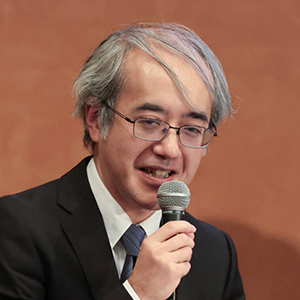 Professor Ryoichi Komiyama
Professor Ryoichi Komiyama
Graduate School of Engineering, The University of Tokyo
Toward Establishment of 2040 Electricity System
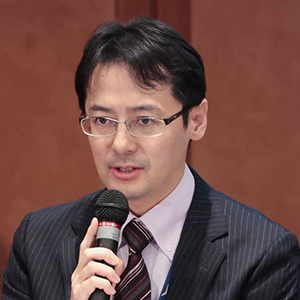 Masahiro Chikushi
Masahiro Chikushi
Director, Electricity Infrastructure Division, Agency for Natural Resources and Energy
Japan’s Strategic Energy Plan has undergone a series of revisions in an environment where the goal is to combine carbon neutrality with economic growth. The draft of the Seventh Strategic Energy Plan published in late 2024 includes the following three points related ot the electricity system.
- Progress on decarbonization of electricity generation with security of supply as a prerequisite
The use of renewable energy has been a topic for debate over the past decade. Given the anticipated growth in demand for electric power in the future, further investment in power sources will be necessary, and establishing a conducive environment for this purpose will be crucial. - Grid infrastructure, right-siting, and flexibility in supply and demand to enable efficient use of generation resources
The potential for renewable energy varies between regions. It is anticipated that measures will be needed in the supply network to address the questions of how renewable energy scattered about different parts of the country can be put to use in major demand centers like Tokyo and Osaka, and how new sources of demand such as data centers can be clustered in locations that are favorable for renewable energy. - Creating an environment that enables retailers to supply consumers with stable pricing
The cost of operating the electricity system is funded by the tariffs paid by consumers. As fluctuations in this pricing have a large impact on people’s lives and economic activity, there is a need to explore efficient trading practices while also taking account of the costs imposed.
Case Study of How Chile is Addressing Renewable Energy Challenges in South America
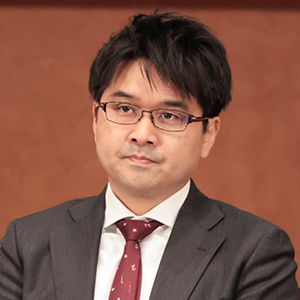 Professor Koichiro Ito
Professor Koichiro Ito
Harris School of Public Policy, University of Chicago
Renewable energy faces three main difficulties. While the issue of high prices should eventually be resolved given predictions that costs will fall to levels similar to natural gas and other resources, the two problems that remain pose major challenges. These are the misalignment of where it is produced and where it is consumed and the intermittent nature of its generation. Here, I would like to use Chile in South America as an example with which to discuss these issues.
Chile and Japan have in common that they are both long, narrow countries that are entirely lacking in fossil fuel resources. Relying on imports from other countries for fossil fuels imposes high risks while the hydroelectric power that Chile has traditionally relied upon has the weakness that generation is impeded during droughts. It was to reduce these risks that the nation embarked on the development of renewable energy from around 2014.
In 2017, the government of Chile built a high-capacity, long-distance, high-voltage transmission line to link the Atacama Desert, the site of large photovoltaic power plants, to the centers of demand in the north-east. The resulting increase in the wholesale price of electricity generated in the Atacama Desert incentivized investment and led to low-priced electricity being supplied across the country. Progress is also being made on the installation of battery energy storage systems (BESSs) to make up for the inability to generate continuously. While not everything that was done would necessarily be applicable in Japan, there is much to be learned from this example.
Energy Supply and Demand that Contributes to S+3E
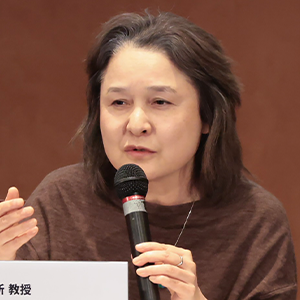 Professor Yumiko Iwafune
Professor Yumiko Iwafune
Institute of Industrial Science, The University of Tokyo
While photovoltaic power generation has a low levelized cost of electricity (LCOE), it has become evident that, when integration costs are included, it becomes more expensive the greater the amount of variable renewable capacity there is in the system. While there are a number of reasons for this, including higher losses due to charging and discharging, the greatest impact comes from the increased loss of output due to curtailment. As a countermeasure to this, it has been estimated that demand response (DR) measures that use consumer devices such as heat pump water heaters and electric vehicles (EVs) to reduce curtailment can cut costs by up to 45%.
Hitachi-UTokyo Laboratory has for some time been researching energy supply and demand practices that can contribute to “security, energy security, economic efficiency, and the environment” (S+3E) through better utilization of renewable energy achieved by the exchange of data between the electricity market and consumer devices. The difficulty lies in how best to aggregate these small-scale resources. For example, while Japan currently has around nine million heat pump water heaters in operation, most of these are installed in people’s houses, only very few of which have home energy management systems (HEMSs) with external communication capabilities.
In response, The University of Tokyo has built a test bench where it is investigating the possibility of putting a mechanism in place whereby vendor apps are used to control these appliances remotely. Improving the availability of vehicle or appliance data has been identified as one factor that might facilitiate the use of these small-scale resources. It seems likely that the provision of some form of assistance for producing and installing systems that meet this criterion will be needed to incentivize green investment.
Building Energy Systems for Industry GX
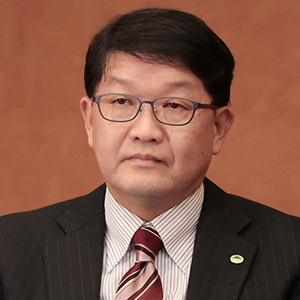 Tatsuya Yamada
Tatsuya Yamada
Head of Sales Planning and International Division, Corporate Sales and Marketing Group, Hitachi, Ltd.
Rising demand for electricity means that industry, too, has a strong need for decarbonized generation. Countries around the world are accelerating action on renewable energy motivated by security of supply and price stability considerations. Australia, for one, has established 43 renewable energy zones within its borders based on a plan to eliminate the burning of coal and transition to renewables by 2038. This policy treats the infrastructure for the generation and transmission of renewable energy as well as demand and community acceptance as a single set of issues, with holistic consideration of matters such as how close regions with high renewable generation potential are to centers of electricity demand and industrial and regional policies that also consider the future of workers previously employed in the coal industry.
The Australian government is also investing public money to encourage private investment. For example, it is seeking to give greater certainty over investment in equipment by providing clarity about when and at what scale decarbonized generation will become available. It is also looking at schemes for supporting investment in renewable energy.
According to its GX2040 Vision (draft) published at the end of 2024, Japan is expected to follow a similar path. I believe it is important that we seek to realize a GX vision that treats generation, transmission, and demand in tandem with one another while also utilizing data and digital technology for planning and prediction, something that is being facilitated by progress on installing smart meters in Japan.
Energy Transition and Electricity System
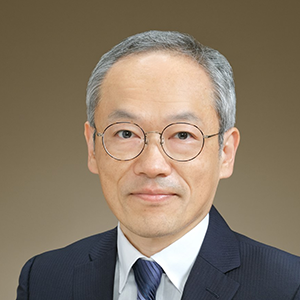 Professor Hiroshi Ohashi
Professor Hiroshi Ohashi
Vice President, The University of Tokyo
A key factor in the first round of system reforms introduced in 2020 was the liberalization provided by opening up access to the assets of existing operators. Unfortunately, these changes did not adequately anticipate the strong rise in electricity demand and the adoption of serious measures to achieve decarbonization. Although liberalization led to exploration of different forms of coordination, including the cross-regional redistribution of electric power, the concern is that this will only result in responsibility for supply becoming more dispersed.
Recognizing this, the second round of system reforms could address the following issues.
- Short-term considerations predominate even in the electricity business, making it impossible to maintain business models for infrastructure development that involve recovering large investments over long periods of time.
- GX needs to deliver all of the 3E objectives, including carbon neutrality.
- There is a need to reset the balance between competition policy and policy support (industrial policy).
To realize the benefits of liberalization, I believe the second round of system reforms needs to move on to the phase of making the most of innovation by business operators. As well as reforming markets that are biased toward the short term, another factor that I see as important for accelerating investment in generation will be the attitude we choose to adopt toward practices that diminish the profitability and certainty of investment, such as rules on use of transmission lines. We need to foster an approach in which the associated markets clarify the concepts involved, not the least of which is encouragment for long-term infrastructure development, and for the stakeholders involved to make a commitment on the presumption of security of supply.
KomiyamaWhile establishing a business environment that incentivizes investment in decarbonized generation will likely be one of the challenges going forward, what issues are raised by the new system design and extensions to the current system?
ChikushiThere are two main issues that I see. The first is the difficulty of predicting environmental change over long lead times and acting on this. We need to think about how we manage the investments and costs that necessarily arise over the long period between equipment installation and a power plant commencing operation. The other issue is how electricity providers in the past have been supported by power purchase agreements (PPAs). We need to create an environment in which it is easy for diverse customers and the retail operators who service them to enter into PPAs.
OhashiIn the context of maintaining and developing generation capacity over the long term, it is essential to consider how to respond when the social significance of the facilities themselves undergoes fundamental changes. Nuclear and coal power are typical examples—should the societal discourse shift suddenly due to natural disasters or growing concerns about climate change, private operators may abruptly find themselves held accountable. This potential risk makes it inherently difficult to advance projects under private responsibility alone.
Unless the government maintains a consistent long-term stance within the framework of public-private collaboration, investment itself is unlikely to proceed. Given these conditions, discussions surrounding the profitability of such projects must be premised on the recognition of these structural challenges.
ItoSomething I didn’t mention in my presentations was that government-initiated PPAs were one of the factors behind Chile’s success. By agreeing to purchase a certain amount of renewable energy, the government made a long-term commitment. Moreover, almost all the renewable energy generation in Chile takes place through long-term contracts between buyers and suppliers and I see this as another successful example of how to do things. That is why I agree with the proposition that Japan should make greater use of PPAs.
KomiyamaWhat sorts of institutional reform and support do you think will be needed if we are to take a new approach to the lack of deployment in Japan? Also, please tell me if you see opportunities for digital technology to play a part.
IwafuneAs no progress will happen without motivation, getting the right mechanisms in place will be important. This might involve offering incentives to the vendors of DR-capable vehicles and appliances or retail tariffs that are linked to the spot market. Moreover, as the fuel price difference on its own does not provide enough value to shift demand, I believe that creating advantages will also be important, such as by reducing the price of transmission when the availability of renewably generated energy is high.
YamadaWhile data sharing between generators and transmission operators is happening, little progress has yet been made on access to consumer data. Accordingly, I believe that we will need to take a systematic approach to enabling the integrated use of data. Moreover, as some regions are more suited to renewable generation than others, I also see a need for us to act in ways that make the most of each region’s characteristics by building high-capacity long-distance transmission links between them.
Closing Address
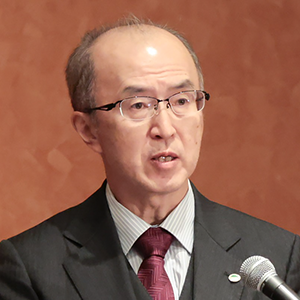 Itaru Nishizawa
Itaru Nishizawa
CTO, General Manager of the Research & Development Group, Hitachi, Ltd.
 Atsushi Deguchi
Atsushi Deguchi
Executive Director and Vice President, The University of Tokyo and Head of the Hitachi-UTokyo Laboratory
Following the three hours of presentations and discussion, Itaru Nishizawa, Vice President and Executive Officer, CTO, and GM of the Research & Development Group at Hitachi, Ltd., gave the following closing remarks. “Having been established in 2016, Hitachi-UTokyo Laboratory is now in its nineth year. While the initial focus of discussion at the laboratory was on the electricity system, its scope has since expanded to encompass the integrated transition and how best to achieve the transition to carbon neutrality and the electricity system of the future. Through dialogue with experts across a range of fields, I feel it has provided opportunities to consider specific actions for Japan’s Strategic Energy Plans and GX strategy. I look forward to the laboratory continuing to offer reliable and specific advice on the reform of the electricity system.”
Next, Atsushi Deguchi, Executive Director and Vice President of The University of Tokyo, who also heads the Hitachi-UTokyo Laboratory, had the following to say about the prospects for the future, also referring to how the concept of an integrated transition embodies a mix of interrelated meanings, involving a comprehensive approach to resolving diverse challenges that encompasses society, regions, and industry.
“While action on achieving carbon neutrality in 2050 is accelerating, the energy environment continues to experience tumultuous changes. If we are to build the energy system that is right for us, the debate needs to take onboard the new issues that arise as a result of the changes happening in society. By sharing the debates that take place at Hitachi-UTokyo Laboratory with a wide variety of stakeholders and building a platform for realizing a sustainable energy system, we will strive to provide a venue for ongoing mutual collaboration and dialogue.”
Informed by the discussions that took place at this forum, the seventh edition of the Toward Realizing Energy Systems to Support Society 5.0 proposal from Hitachi-UTokyo Laboratory is due to be published in April 2025.



